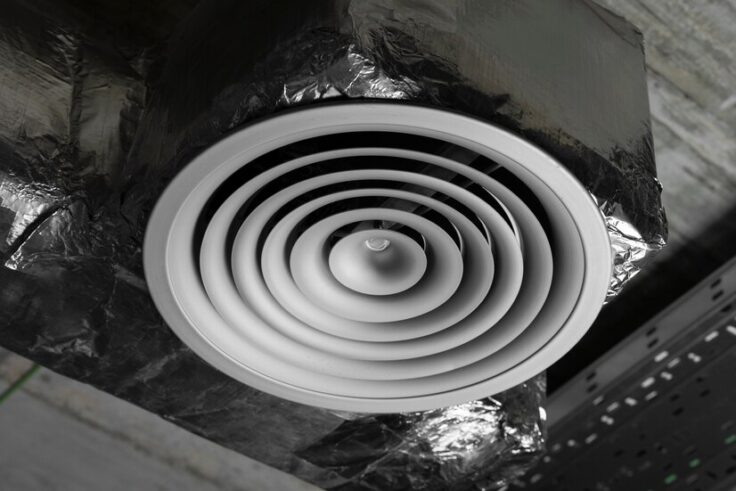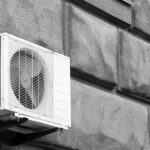
The Importance of Regular Air Duct Sealing Maintenance
Air duct sealing might not be the most glamorous home maintenance task, but its impact on your indoor environment is significant. Properly sealed ducts enhance energy efficiency, improve air quality, and ensure that your HVAC system operates at peak performance. Neglecting this crucial aspect can lead to increased energy bills, uneven heating or cooling, and potential health issues due to dust and allergens. Understanding the importance of regular air duct sealing maintenance can help you keep your home comfortable and efficient year-round.
How Air Duct Sealing Improves Energy Efficiency
Air duct sealing plays a crucial role in improving energy efficiency by preventing the loss of conditioned air. When ducts are leaky or poorly sealed, a significant portion of the air travels through gaps and cracks, leading to wasted energy and higher utility bills. Proper sealing ensures that the air delivered from your HVAC system reaches its intended destination without unnecessary leakage, thus optimizing the system’s performance.
By maintaining well-sealed ducts, your HVAC system doesn’t have to work as hard to compensate for lost air, which reduces energy consumption and extends the lifespan of your equipment. This efficiency translates directly into cost savings on your energy bills while also contributing to a more consistent and comfortable indoor environment.
The Link Between Air Duct Sealing and Lower Energy Bills
Air duct sealing directly contributes to lower energy bills by addressing one of the most common inefficiencies in home heating and cooling systems. Leaky or poorly insulated ducts can cause up to 30% of the air to escape before it even reaches its intended rooms. This inefficiency forces your HVAC system to work harder to maintain the desired temperature, resulting in increased energy consumption and higher utility costs.
When ducts are properly sealed, the air flows more efficiently through the system, ensuring that all the conditioned air is used effectively. This reduction in wasted air not only lowers the amount of energy required but also reduces the strain on your HVAC system, leading to decreased energy bills and extended equipment lifespan.
Impact of Air Duct Sealing on Indoor Air Quality
Properly sealed air ducts can significantly enhance indoor air quality by preventing dust, allergens, and other contaminants from circulating throughout your home. Leaky ducts often allow outside air, dust, and pollutants to enter the system, which can then be distributed through your living spaces. Sealing these leaks helps to ensure that only clean, conditioned air is delivered, reducing the amount of dust and allergens that you and your family breathe.
Additionally, sealed ducts minimize the risk of mold growth, which can thrive in damp, unsealed areas. By maintaining well-sealed ducts, you not only improve the overall cleanliness of your indoor air but also promote a healthier living environment and reduce potential respiratory issues related to poor air quality.
Signs Your Home Needs Air Duct Sealing
Identifying the need for air duct sealing can prevent inefficiencies and discomfort in your home. Here are signs that suggest your air ducts may require sealing:
- Uneven Temperature Distribution: If some rooms remain consistently warmer or cooler than others, it could be due to leaks or poor insulation in your ducts. These issues disrupt airflow, leading to uneven temperature control throughout your home.
- Increased Energy Bills: A noticeable rise in your energy bills, without a corresponding increase in energy usage, often signals air leaks in the duct system. These leaks force your HVAC system to work harder, consuming more energy.
- Dust Accumulation: An increase in dust around vents or throughout your home may indicate that dust and debris are being drawn into your duct system through leaks. This not only affects air quality but also increases cleaning needs.
- Strange Noises: If you hear unusual noises like rattling or whistling from your HVAC system, it could mean that air is escaping through damaged or loose ductwork. These sounds often signal the need for immediate inspection and repair.
The Benefits of Regular Air Duct Sealing Maintenance
Regular air duct sealing maintenance offers several advantages that go beyond just improving your home’s comfort. Here are some key benefits:
- Enhanced Energy Efficiency: Regular air duct sealing ensures your HVAC system runs at peak efficiency, reducing energy waste by preventing conditioned air from escaping through leaks. This efficiency directly translates into lower utility bills and reduced environmental impact.
- Improved Indoor Air Quality: Sealed ducts prevent dust, allergens, and pollutants from entering the airflow in your home. This reduction in airborne contaminants promotes better indoor air quality, leading to a healthier living environment and fewer respiratory issues.
- Extended HVAC System Lifespan: By maintaining well-sealed ducts, you reduce the strain on your HVAC system, preventing overwork and potential damage. This proactive approach helps extend the system’s lifespan, minimizing the need for frequent and costly repairs.
- Consistent Comfort: Regular air duct sealing ensures even distribution of air throughout your home, preventing the occurrence of hot or cold spots. This consistent airflow contributes to a more stable indoor temperature, enhancing overall comfort and satisfaction.
How Often Should You Schedule Air Duct Sealing?
Scheduling air duct sealing maintenance every 3 to 5 years is generally recommended to ensure optimal performance of your HVAC system. This timeframe helps to address any wear and tear or leaks that may develop over time, preventing inefficiencies and maintaining energy savings. However, if you notice signs like uneven temperature distribution or increased dust, it might be wise to have your ducts inspected sooner.
In addition to regular intervals, consider scheduling a thorough inspection if you’ve recently renovated your home or experienced significant changes in your energy bills. Keeping to a regular maintenance schedule can help you avoid larger issues, ensuring your home remains comfortable and energy-efficient year-round.
The Cost of Air Duct Sealing and Its Return on Investment
The cost of air duct sealing can vary based on the size of your home and the extent of the ductwork needing attention. While the initial investment may seem substantial, the return on investment is often significant. Proper sealing of air ducts can lead to notable reductions in your energy bills, as it helps your HVAC system operate more efficiently by minimizing air leaks and loss.
In addition to lowering monthly utility costs, effective duct sealing extends the lifespan of your HVAC equipment and improves overall indoor air quality. These long-term benefits often outweigh the upfront costs, making air duct sealing a valuable investment for both comfort and savings in the long run.
How Air Duct Sealing Affects HVAC System Performance
Air duct sealing directly influences HVAC system performance by ensuring that conditioned air reaches its intended destinations efficiently. When ducts are leaky or poorly sealed, air escapes before it reaches the rooms, causing the system to work harder to maintain the desired temperature. This increased workload can lead to higher energy consumption and more frequent breakdowns.
By sealing ducts properly, you enhance the overall efficiency of your HVAC system. The system doesn’t need to exert extra effort to compensate for lost air, leading to improved performance, lower energy costs, and reduced wear and tear on the equipment. This optimization not only ensures consistent indoor comfort but also extends the lifespan of your HVAC system.
Preparing Your Home for Air Duct Sealing
Preparing your home for air duct sealing can help ensure a smooth and effective process. Here are key steps to take before the sealing work begins:
- Clear Access Points: Ensure that all vents, registers, and access panels are easily reachable by removing any furniture or other obstructions. This will facilitate the technician’s ability to inspect and seal the ducts effectively and efficiently.
- Clean the Area: Thoroughly vacuum and clean around duct openings to eliminate dust and debris. A clean area helps the technician work more effectively and ensures that sealing materials adhere properly, resulting in a better seal.
- Inspect for Existing Issues: Examine your ductwork for visible issues such as disconnected segments or mold growth. Identifying and reporting these problems before sealing allows the technician to address them, ensuring a more thorough and effective job.
- Schedule a Professional Inspection: Arrange for a professional inspection of your ductwork prior to sealing. A comprehensive assessment ensures that all necessary repairs and adjustments are made, leading to an effective sealing process and improved system performance.
Regular air duct sealing maintenance is essential for maintaining an energy-efficient, healthy, and comfortable home environment. By ensuring that your ducts are properly sealed, you can prevent energy waste, improve indoor air quality, and extend the lifespan of your HVAC system. The benefits of a well-maintained duct system are clear, from lower utility bills to consistent temperature control.
If you suspect that your air ducts need attention or if it’s been a while since your last sealing, don’t wait. Contact Cool Factory, Inc today for a professional inspection and expert air duct sealing services. Our team in Sterling, VA, is ready to help you achieve optimal home comfort and efficiency. Call us now at (703) 713-5113 to schedule an appointment and ensure your home is performing at its best.






